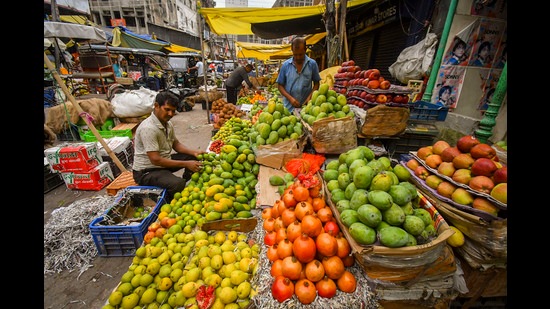The New York Times, long considered a cheerleader of the select global club sceptical of India’s exponential phy-gital (physical and digital) capabilities build-up in recent years, acknowledged the same, writing in late June how “positive vibes” from India are making it a preferred destination for marquee American and European conglomerates, accentuating a clear shift away from mainland China.

The budget presented on Tuesday, a record seventh (including February’s interim budget) for the current finance minister, cements the idea of competitive capacity and capability building through putting in place nine enablers or levers that ensure the incremental centricity of the country in the rapidly changing global production and supply chain ecosystem. It does this by focussing on relevant skill sets, enhancing female participation in the workforce while formalising the labour force, simultaneously anchoring upliftment of MSMEs and boosting capex and education. It also seeks the rationalisation of taxes with long-term imperative, which has the potential to structurally change the way financialisation benefits both savers and users without being susceptible to shocks embedded in the global financial system.
Given the change in food intake/nutrition habits with rising income and education levels, the announcements with regards to usage of digital public infrastructure (DPI) to include the holdings of 60 million farmers in digital registries can revolutionise the delivery of agri-credit and strengthen market infrastructure through loops of forward and backward linkages. Additionally, digital crop surveys and creating clusters of vegetable production near major consumption centres can blunt volatility in key inflation components. Self-sufficiency in oil seed production will further reduce imports while stability on the pulses front, along with a nudge to farmers on adopting natural farming practices, augurs well.
However, for agriculture to become sustainable, policy makers and regulators would do well to revisit the recommendations of the committee on Agri Value Chain Financing headed by C S Shetty of the State Bank of India, to enable the desired transition. The report was submitted in 2021 and is still awaiting implementation.
The three-pronged approach to enhance formalisation of employment generation, through incentivising all stakeholders, should upend the changing labour landscape, while ensuring benefits are reaped over a long term, most handsomely by those who are fresh entrants to the country’s job markets.
Increasing participation of women, apart from helping the cause of gender diversity, should broaden the skill sets of the entire workforce. A great example is the country’s flourishing self help group (SHG) landscape, which shows how enhanced market access at the local level can work wonders for strengthening the rural economy in particular. Financing skills acquisition through a guaranteed loan, as also financial support through e-vouchers for education loans, are both good schemes.
Bringing a clutch of resource-rich eastern states into the mainframe through targeted corridor development schemes augurs well for a holistic vision of national development. MSMEs, which have a pivotal role in India’s ascent to developed nation status by 2047, will be benefitting significantly through the guarantee scheme for the purchase of machinery and equipment without collateral/third-party guarantee up to ₹100 crore, while usage of alternative data viz. tax and other digital footprints for delivering in-time and just credit (initiated by SBI last month) can be a game changer given rising integration with platform-based initiatives such as OCEN and ONDC that promise to democratise the existing architecture. They will also benefit from the enhanced latitude of TReDS platform, dedicated coverage of MSME clusters through localised SIDBI branches, and creation of e-commerce export hubs in the PPP mode.
On the taxation front, the intent of the government is noteworthy as it has taken bold initiatives to smoothen asymmetries in taxation of various asset classes.
However, some clarification is needed on taxation aspects of capital gains from non-financial assets, notably ancestral properties where indexation and grandfathering benefits seem fair for genuine cases. While the proposed taxation ensures that end usage of funds will be assured across same asset classes transfer, to leverage the tax benefits and discourage cross-usage of gains for speculative purposes (also bolstered by higher taxation on F&O), there is also a possibility of increased usage of cash in real estate transactions.
Further, there is a genuine need to offer tax incentives to bank deposits to keep them competitive. Currently, bank deposits are subject to taxation of interest income at accrual level, and we must appreciate that banks in India largely fund themselves through retail deposits rather than wholesale funding as seen in other regions (which has been a clear and frequent source of contagion). Clearly, banks which are the custodians of large deposit franchise in the country, deserve better. India has limited social security and interest from bank deposits are often used by senior citizens for offsetting consumption expenditure. The good thing about an increase in capital gains tax could be a temporary interest in bank deposits in the interregnum, but that could fizzle out soon sans structural optimal parity.
Finally, adhering to the path of sound fiscal management, fiscal deficit for FY25 is estimated at the 4.9% of GDP as against 5.8% of GDP in revised estimate of FY24. The nominal GDP for FY25 is estimated at ₹326 lakh crore, a 10.5% growth over FY24. With RBI growth projections at 7.2% for FY25 (SBI’s 7.5%), we believe that this is conservative estimate. In such a case, the budget numbers could throw up a positive surprise at the end of the fiscal. We believe that cost of borrowing of the government is likely to decline as budgeted borrowing numbers are lower than FY24 estimates by ₹20,000 crore.
To sum up, this is a budget that lays the groundwork to deliver on promises that benefit each and every Indian, sans any differentiation. Therein lies its simple magic.
Soumya Kanti Ghosh is group chief economic advisor, State Bank of India, and member, 16th Finance Commission. The views expressed are personal


